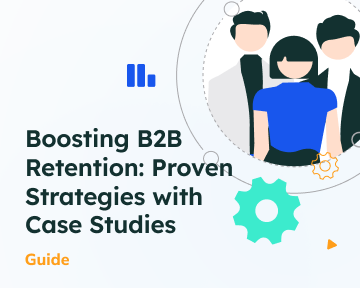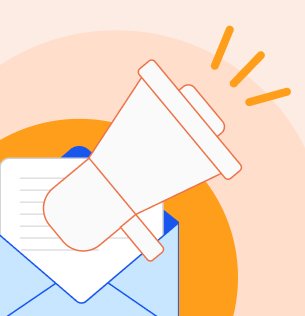Small and medium-sized enterprise (SMEs) often face challenges such as limited resources, intense competition, and the need to establish credibility with clients. Fortunately, cutting-edge digital tools can be transformative for B2B SMEs, enabling them to streamline marketing efforts, produce engaging content, and connect with prospects more effectively. In today’s fast-evolving landscape, SMEs have an unparalleled opportunity to thrive — but success will favour those who embrace not only marketing automation and other essential tools but also the power of AI.
Here are five practical ways on how ChatGPT in marketing can empower SME’s to enhance their marketing efforts.
1. Effortless Content Creation for Niche Audiences
This is maybe the most popular way to use ChatGPT in marketing for all industries: writing content according to certain criteria. Creating content that resonates with a specific B2B audience can be especially time-intensive. ChatGPT simplifies the process by generating high-quality blog posts, whitepapers, LinkedIn articles, and case studies tailored to your industry.
Case:
An IT consulting firm can use ChatGPT in marketing to draft an insightful blog post about the benefits of migrating to cloud-based infrastructure, targeting mid-sized manufacturers exploring digital transformation.
How to frame request to ChatGPT:
- Describe the target audience (e.g., mid-sized manufacturers exploring digital transformation).
- Define the purpose or goal of the content (e.g., to highlight the benefits of migrating to cloud-based infrastructure).
- Mention the desired tone or style (e.g., insightful, professional, engaging).
- Drawing the context, do not forget specific adjustments you might need (e.g., including industry-specific examples or using British English).
Example Request:
“Draft an insightful blog post about the benefits of migrating to cloud-based infrastructure, targeting mid-sized manufacturers exploring digital transformation. The tone should be professional and engaging, with industry-specific examples relevant to manufacturers. Additionally, include a call to action encouraging readers to learn more about IT consulting services.”
2. Personalised Outreach to Prospects
B2B marketing often involves targeted outreach, but crafting multiple personalised emails or LinkedIn messages with the same core content can be daunting. ChatGPT can draft compelling, tailored communication for your prospects based on their industry, role, and challenges and it doesn’t get tired of creating messages at scale.
Case:
A software provider wants to use ChatGPT in marketing to create multiple customised email sequences for potential clients in different sectors, such as e-commerce, healthcare, and professional services, highlighting solutions to their specific pain points. Information on the prospects names, positions, industry and unique selling point that has to be applied is available in an Excel file.
How to frame request to ChatGPT:
1. Clarify the purpose (e.g., creating customised emails for prospects in different industries and positions).
2. Prepare the file with the prospects data:
- a. Ensure the file is well-organised, with clear headers such as Name, Position, Industry, USP (or any other relevant columns).
- b. Save it in a supported format, like CSV or Excel.


3. Request adjustments for specific audiences (e.g., by industry, tittle, or pain point).
4. Provide details on how you’d like the emails structured (e.g., greeting, body, CTA).
5. Define the tone and format (e.g., professional, concise, solution-focused).
Example Request:
“Using the uploaded file, create customised email messages for each prospect. Use their name, position, and industry to personalise the greeting and adjust the unique selling point accordingly. The email structure should include a greeting, a short intro to our software, the tailored USP, and a clear call to action.”
Read more about developing email drip campaigns with ChatGPT.
3. Proposing Campaign Ideas for Lead Generation
Struggling to come up with fresh ideas to attract leads? ChatGPT in marketing can suggest creative campaigns or lead magnets tailored to your industry and audience.
Case:
A B2B SaaS company is seeking new ideas to promote a free webinar via distributing a lead magnet.
How to frame request to ChatGPT:
1. Details about the Webinar
- The topic and focus of the webinar.
- The target audience (e.g., industry, job roles, challenges).
- Key benefits or takeaways for attendees.
2. Purpose of the lead magnet
- Drive interest and registrations for the webinar.
3. Preferred format
- Specify the type of lead magnet they are considering (e.g., ebook, checklist, infographic) or leave it open-ended for suggestions.
4. Tone and style preferences
- Should it be professional, engaging, data-driven, or creative?
Example Request:
“We are a B2B SaaS company looking for ideas for a lead magnet to promote a free webinar on [topic], targeting [specific audience, e.g., marketing managers in the e-commerce industry]. The webinar will focus on [key benefits or takeaways, e.g., strategies to improve ROI using marketing automation tools].
We want the lead magnet to:
- Spark interest in the topic.
- Demonstrate the value of attending the webinar.
- Encourage registrations.
Suggest lead magnet ideas that align with these goals. Feel free to include formats such as ebooks, infographics, or checklists. The tone should be professional and insightful, with a focus on practical value.”
Check out this template of a universal digital marketing campaign that can be applied almost by any business.
4. Streamlining Market Research
B2B businesses must stay informed about industry trends, competitors, and client pain points. By using ChatGPT in marketing you can summarise market reports, extract key insights from industry articles, and even help draft surveys for your target audience.
Case:
A logistics company needs help from ChatGPT in marketing to identify key supply chain challenges businesses face as retail or pharmaceuticals, and position their services as the solution in marketing materials.
How to frame request to ChatGPT:
1. Industry Context
- Specify the industries (e.g., retail, pharmaceuticals) you want insights about.
2. Purpose
- Clarify that the goal is to identify challenges and craft messaging to position your services as the solution.
3. Marketing Material Type
- Mention the intended format (e.g., blog posts, brochures, email campaigns).
Example Request:
“We are a logistics company aiming to identify key supply chain challenges faced by businesses in specific industries, such as retail and pharmaceuticals. We want to position our services as the ideal solution to these challenges in marketing materials.
Please provide:
- A list of common supply chain challenges for each industry.
- Suggestions on how our logistics services (e.g., inventory management, last-mile delivery, temperature-controlled storage) can address these issues.
- Messaging ideas for marketing materials, including blogs, email campaigns, and brochures.
The tone should be professional and persuasive, focusing on practical value and industry-specific insights.”
5. Analysing Data and Uncovering Insights
Marketing generates a wealth of data, but finding actionable insights can be challenging. ChatGPT can help you analyse past campaign performance by answering specific questions about your data, identifying patterns, and uncovering hidden correlations.
Example:
A B2B consulting firm would like to analyse data from past email campaigns sent to IT managers and define next steps for improvements.
How to frame request to ChatGPT:
1. Prepare the Data
- Use a structured format like CSV or Excel.
- Include key metrics such as email subject, open rate, click-through rate (CTR), conversion rate, bounce rate, industry segment, date sent, etc.
2. Add Context
- Briefly describe the campaigns (e.g., their goals, target audience).
- Highlight any areas of concern or specific metrics to focus on (e.g., low CTR, high bounce rate).
3. Upload the File
- Share the file directly here so that ChatGPT can analyse it and generate insights.
Example Request:
“We are a B2B consulting firm targeting IT managers with email campaigns. Attached is data from our past campaigns, including metrics like open rate, CTR, and conversion rate.
Please do following:
- Analyse the data to identify trends, patterns, and any underperforming areas.
- Provide easy-to-understand insights on what may have influenced the results.
- Suggest actionable steps to improve future campaigns, such as changes to subject lines, timing, or content strategy.
The insights should be concise, practical, and tailored to our target audience of IT managers.”
Conclusion
ChatGPT in marketing is more than just a content generation tool — it’s a versatile assistant that can help B2B SMEs save time, engage prospects, and scale their marketing efforts. By leveraging AI for tasks like content creation, personalisation, and data analysis, small businesses can compete more effectively in the demanding B2B space. Remember, the key to success lies in pairing ChatGPT’s outputs with your industry expertise and personal touch.
What’s Next For You
Are you looking to adopt more digital instruments for your small or medium business? Does your marketing team struggle to implement effective email drip campaigns or maximise engagement with your prospects? With the “Lead Gen and CRM” Marketing Automation tool, you can streamline your marketing efforts, personalise your outreach, and stay connected with your current and potential clients seamlessly. Contact us today for a free consultation and discover how digitalising your business can accelerate your growth.





